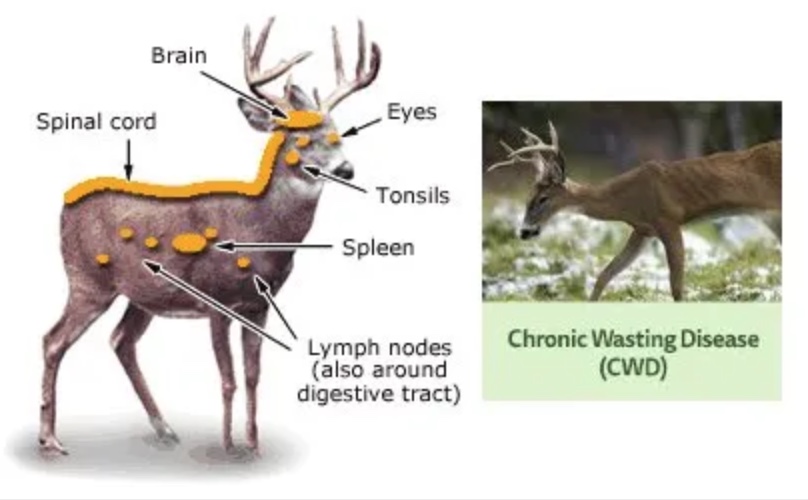AUSTIN – Texas Parks and Wildlife Department and Texas Animal Health Commission received confirmation of two new cases of Chronic Wasting Disease in separate deer breeding facilities in Hamilton and Frio counties. These cases mark the first detection of the disease in each county.
A single case in a Hamilton County facility was detected using antemortem (live animal) testing to determine if the animal was movement qualified, or approved for transfer from the property to a registered release site. A single case in a Frio County facility was detected using postmortem testing following a natural mortality conducted to meet TPWD surveillance requirements.
The samples submitted to the Texas A&M Veterinary Medical Diagnostic Laboratory in College Station were ultimately confirmed by the National Veterinary Services Laboratory in Ames, Iowa. Officials took immediate action to secure all deer at the facilities. TPWD and TAHC plan to continue working together to conduct additional investigations into the extent of the disease within the facilities.
CWD has an incubation period that can span years, meaning the first indication in a herd may likely come through testing rather than observing clinical signs. Early detection and proactive monitoring improve the state’s response time to a disease outbreak and can greatly reduce the risk of further disease spread. Antemortem testing provides a continuous testing baseline that can further clarify the epidemiological uncertainties related to the origin of a disease outbreak. In addition to postmortem testing and other surveillance requirements, this testing helps guide future changes to the disease management strategy.
CWD is a fatal neurological disease found in certain cervids including deer, elk, moose and other members of the deer family. It is a slow and progressive disease, and due to a long incubation, cervids infected with CWD may not produce any visible signs for several years after becoming infected. As the disease progresses, animals with CWD show changes in behavior and appearance. Clinical signs may include progressive weight loss, stumbling or tremors with a lack of coordination, excessive thirst, salivation or urination, loss of appetite, teeth grinding, abnormal head posture and/or drooping ears.
In Texas, the disease was first discovered in 2012 in free-ranging mule deer along a remote area of the Hueco Mountains near the Texas-New Mexico border. CWD has since been detected in captive and free-ranging cervids in the state including white-tailed deer, mule deer, red deer and elk. For more information on previous detections in Texas, visit TPWD’s CWD page.
To date there are no known cases where CWD has infected a human but recent research suggests that CWD transmission from infected animals to humans should not be ruled out. As a precaution, it is recommended that hunters test harvested cervid species for CWD and not consume the meat of infected animals.
For more information about CWD, visit the TPWD website or the TAHC website.

Chonic Wasting Disease (Courtesy/reddit)

Chronic Wasting Disease in Deer (Contributed/TimRGoodwin)
Subscribe to the LIVE! Daily
Required






Post a comment to this article here: